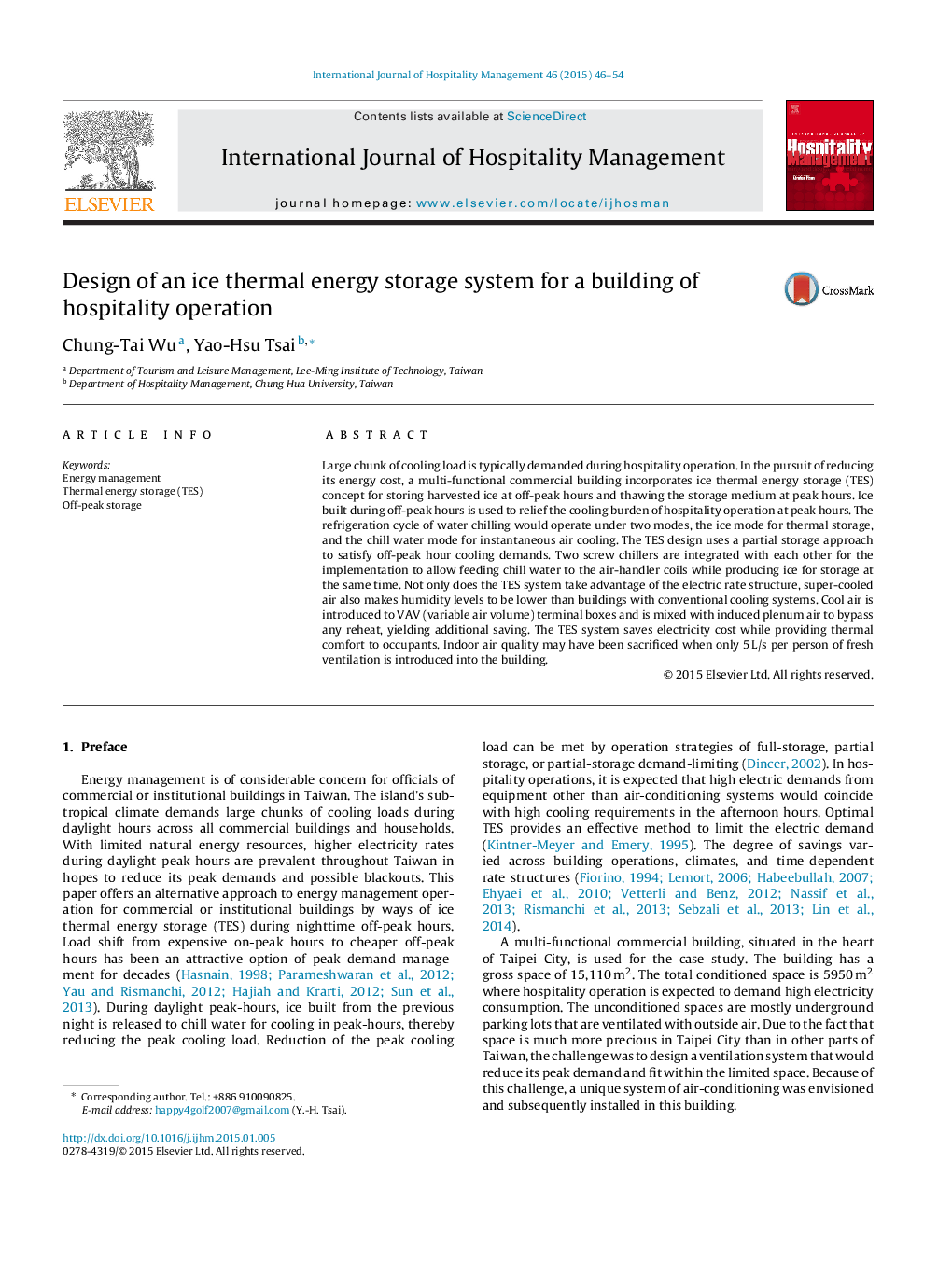| کد مقاله | کد نشریه | سال انتشار | مقاله انگلیسی | نسخه تمام متن |
|---|---|---|---|---|
| 1009395 | 1482491 | 2015 | 9 صفحه PDF | دانلود رایگان |
• To counter peak-hour tariff, load shift is accomplished by the ice TES system.
• Partial storage approach satisfies off-peak cooling demands.
• Cooling burden at peak-hours is relieved by thawed storage medium.
• System cost saving is accomplished with reduced chiller sizing via TES.
• Super-cooled air produces lower humidity than those of other cooling systems.
Large chunk of cooling load is typically demanded during hospitality operation. In the pursuit of reducing its energy cost, a multi-functional commercial building incorporates ice thermal energy storage (TES) concept for storing harvested ice at off-peak hours and thawing the storage medium at peak hours. Ice built during off-peak hours is used to relief the cooling burden of hospitality operation at peak hours. The refrigeration cycle of water chilling would operate under two modes, the ice mode for thermal storage, and the chill water mode for instantaneous air cooling. The TES design uses a partial storage approach to satisfy off-peak hour cooling demands. Two screw chillers are integrated with each other for the implementation to allow feeding chill water to the air-handler coils while producing ice for storage at the same time. Not only does the TES system take advantage of the electric rate structure, super-cooled air also makes humidity levels to be lower than buildings with conventional cooling systems. Cool air is introduced to VAV (variable air volume) terminal boxes and is mixed with induced plenum air to bypass any reheat, yielding additional saving. The TES system saves electricity cost while providing thermal comfort to occupants. Indoor air quality may have been sacrificed when only 5 L/s per person of fresh ventilation is introduced into the building.
Journal: International Journal of Hospitality Management - Volume 46, April 2015, Pages 46–54
